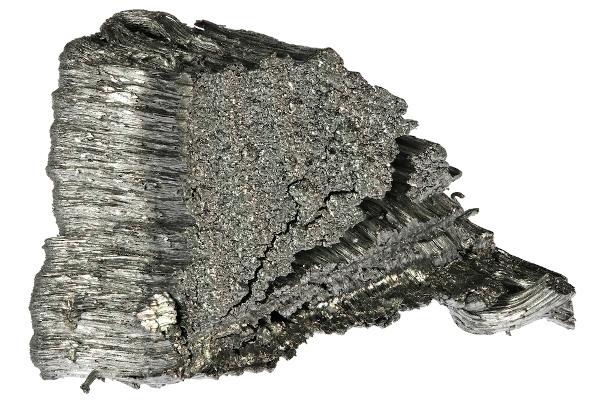THE thulium, symbol Tm and atomic number 69, is one of the lanthanides (known as rare earth metals). Among the lanthanides, it is one of the rarest and, therefore, has a high cost and limited applications. In its metallic form, it has a grayish color and a characteristic silver shine, resisting well corrosion. In solution, like the other lanthanides, thulium adopts an oxidation number equal to +3.
The element is named after the region of Thule or Tile, very common on maps from the Middle Ages to describe regions such as Iceland or Scandinavia. He was discovered in 1879 by a Swedish chemist named Per Teodor Cleve, who carried out analyzes and studies on erbia ore, from the Swedish city of Ytterby. Thulium is basically used in medicine, although dyes with Tm3+ in their composition are present on euro banknotes to avoid counterfeiting.
Read too: Cerium — lanthanide widely used in the glass and catalyst industry
Abstract about the chemical element thulium
Thulium is a metal belonging to the class of lanthanides or rare earth metals.
In metallic form, it has a grayish color.
In solution, its NOx is always +3.
It is one of the rarest lanthanides that exist and, therefore, has a high cost.
It is obtained via reduction with lanthanum in induction furnaces.
There are few uses of thulium, being more used in the field of medicine.
Its discovery is credited to the Swedish chemist Per Teodor Cleve.
thulium properties
Symbol: Tim.
atomic number: 69.
atomic mass: 168.93421 c.m.u.
electronegativity: 1,25.
Fusion point: 1545°C.
Boiling point: 1950°C.
Density: 9.321 g.cm-3 (at 25°C).
Electronic configuration: [Xe] 6s2 4f13.
Chemistry Series: rare earth metals, lanthanides.
characteristics of thulium

Thulium, symbol Tm, exhibits a lustrous gray luster in the metallic state. Although it is relatively stable, it should be stored in a place without humidity. It is a metal soft, ductile and malleable, and can even be cut with a knife.
despite having 41 known isotopes, which range in mass from 146 to 176, Tm has a single natural isotope, 169Tm, which is stable.
Like the other lanthanides, has oxidation number +3 as the most likely. Another shared characteristic is the fact that it releases hydrogen gas (H2) when mixed with dilute acid or steam. It is possible to burn thulium in air, thus producing Tm2THE3.
4 Tim + 3 O2 → 2 Tim2THE3
Where can thulium be found?

the thulium occurs in small amounts together with the other rare earth metals in the minerals. In bastnasite and monazite, two minerals rich in lighter lanthanides and well exploited commercially, the Tm content is no more than 0.1% by mass of Tm2THE3. Minerals with the highest concentration of thulium (in the form of Tm2THE3) are xenotime (0.9%) and eudialite (0.4%).
Another important source of thulium is the rare earth cation adsorption sludge, formed over millions of years in processes of leaching (washing by warm tropical rain) of rare-earth metal granites. China, in particular, exploits these sources, which usually contain around 0.3% by mass of Tm2THE3.
It is quite true that thulium is not very abundant—in fact, it is the least abundant of all lanthanides. However, new discoveries of sources of Tm have even placed it on the same level of rarity as the gold, silver or cadmium.
Check it out on our podcast: Hard as a diamond - what does it mean?
obtaining the thulium
Thulium can be obtained by reduction of its oxide using lanthanum as a reductant, in an induction oven.
tm2THE3 (s) + 2 La (l) → La2THE3 (s) + 2 Tm (g)
Given the reaction conditions (≈ 1500 °C and 10-6 at 10-5 pressure), thulium is obtained in the form of gas, which is deposited in the cold part of the induction furnace.
thulium applications
As it is an expensive element (in the range of US$ 70/gram) and rare, the thulium applications are limited. It is used in small amounts in the medical field, for example as a doping agent in yttrium aluminum garnet (Y3Al5THE12), mineral used in laser surgery. your isotope 170Tm serves as an X-ray source for portable devices.
An interesting fact about thulium is that the Tm ions3+ they are in anti-counterfeiting inks of euro banknotes. When placed in ultraviolet light, the bluish color that appears is precisely the Tm ions3+.

history of thulium
THE element 69 was discovered by Per Teodor Cleve, a Swedish chemist, in 1879 (most of the rare earth metals were even discovered by Swedish chemists). Thulium was discovered while Cleve was studying the mineral erbia from the Swedish city of Ytterby.
THE name “thulium” derives from Thule or Tile, a region in northern Europe, described during the Middle Ages, which has already been attributed to several places, such as Iceland, islands in the north of Scotland and Scandinavia.
Read too: Scientific discoveries that happened by accident
Solved exercises on thulium
question 1
The lanthanides usually present, in solution, the NOx equal to +3. Thulium, symbol Tm, is a lanthanide with atomic number 69. In which of these compounds does Tm have the characteristic NOx of lanthanides?
A) TmCl
B) TmCl2
C) Tim2THE3
D) TmS
E) Tim2I
Response:
Letter C
THE fluorine has NOx equal to -1. The others halogens, in the absence of the oxygen in the formula, they also have a charge equal to -1. THE sulfur, in the absence of oxygen, has a charge equal to -2. Oxygen has a charge of -2. So, the calculation of NOx of lutetium in each substance is given as follows:
TmCl: x + (–1) = 0 → x = +1; so wrong answer.
TmCl2: x + 2(–1) = 0 → x – 2 = 0 → x = +2; so wrong answer.
tm2THE3: 2x + 3(–2) = 0 → 2x – 6 = 0 → x = +3; so correct answer.
TmS: x + (–2) = 0 → x – 2 = 0 → x = +2; so wrong answer.
tm2I: 2x + (–1) = 0 → 2x – 1 = 0 → x = +½; so wrong answer.
question 2
THE 170Tm is an isotope of the chemical element thulium (Z = 69) used as an X-ray source in portable devices. What is the number of neutrons in this isotope?
A) 170
B) 69
C) 101
D) 239
E) 99
Response:
Letter C
THE atomic number of Tm is equal to 69. So, the number of neutrons can be calculated by the following formula:
A = Z + n
A is the mass number, Z is the atomic number and n is the number of neutrons. Substituting the values, we have:
170 = 69 + n
n = 170 - 69
n = 101
By Stefano Araújo Novais
Chemistry teacher
